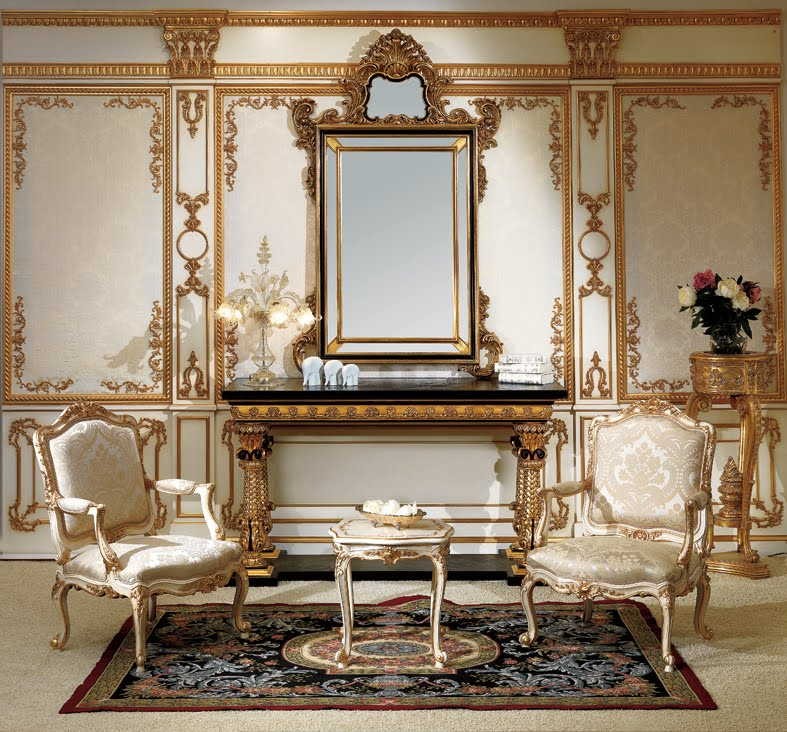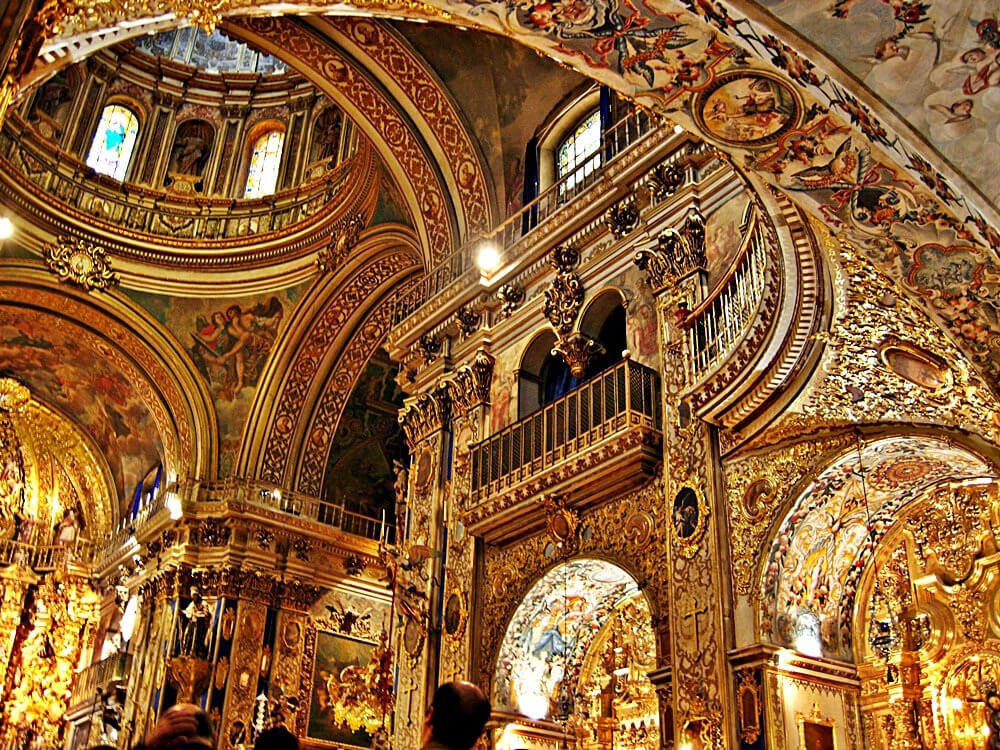Table Of Content

The development of 17th-century landscape painting, in which humans are frequently portrayed as minute figures in a vast natural setting, is indicative of this changing awareness of the human condition. The term Baroque probably ultimately derived from the Italian word barocco, which philosophers used during the Middle Ages to describe an obstacle in schematic logic. Another possible source is the Portuguese word barroco (Spanish barrueco), used to describe an irregular or imperfectly shaped pearl, and this usage still survives in the jeweler’s term baroque pearl. The best known German playwright was Andreas Gryphius, who used the Jesuit model of the Dutch Joost van den Vondel and Pierre Corneille.
Beginnings of Baroque Art and Architecture
Inside interior designer Francis Sultana's baroque Valletta home - Yahoo Lifestyle UK
Inside interior designer Francis Sultana's baroque Valletta home.
Posted: Wed, 17 Apr 2024 14:37:30 GMT [source]
Four of these as well as the Baroque and Neoclassical city of Vigan are both UNESCO World Heritage Sites; and although they lack formal classification, The Walled City of Manila along with the city of Tayabas both contain a significant extent of Spanish-Baroque-era architecture. Representations of the natural world, as well as motifs derived from human and animal forms, were popular decorative features. The most widespread form of Baroque floral decoration was a running scroll, often combined with acanthus – a stylised version of a real plant of the same name. The leaves of the flowers have been turned into scrolling foliage, while the flowers themselves have striped petals, likely to represent a tulip, another key motif of Baroque art.
Urban planning and design
Some of the earliest completed works in the Baroque period were the Church of Gesu, in 1584, and the facade of St. Peter’s Basilica, designed in 1612. As the style took hold, it wasn’t just churches that were crafted in the aesthetic, but secular buildings too. One of the most famous examples of this—commissioned by Louis XIV of France—is the Palace of Versailles. The most ornamental and lavishly decorated architecture of the Spanish Baroque is called Churrigueresque style, named after the brothers Churriguera, who worked primarily in Salamanca and Madrid. Their works include the buildings on the city's main square, the Plaza Mayor of Salamanca (1729).[40] This highly ornamental Baroque style was influential in many churches and cathedrals built by the Spanish in the Americas. The Dutch Golden Age was the only example of the Baroque style employed in a Protestant area, and, as a result, took a very different approach in both architecture and painting.
Transition to rococo
Baroque-Style PC Peripherals : Ornamental MSI Mouse - Trend Hunter
Baroque-Style PC Peripherals : Ornamental MSI Mouse.
Posted: Sun, 14 Apr 2024 08:31:50 GMT [source]
The other painting, Landscape with the Marriage of Isaac and Rebecca (1648) makes the landscape itself the subject, as the only reference to the Biblical story is a small inscription on a tree painted in the idealized pastoral. Claude's work greatly influenced J.M.W. Turner who painted Dido Building Carthage (also known as The Rise of the Carthaginian Empire) (1815), echoing this painting. Turner felt this was so important to his oeuvre that initially his will requested he be buried wrapped in the canvas. He later amended his will to request that the painting be shown, paired with his Sun Rising through Vapour, Fishermen Cleaning and Selling Fish (1807), along with Claude's pair of paintings. Early Baroque architecture was largely contained to Rome, later spreading to more Italian cities before making its way across other European nations.
Multiple International Style architects and designers, but also Modernist artists criticized Baroque for its extravagance and what they saw as "excess". Ironically this was just at the same time as the critical appreciation of the original Baroque was reviving strongly. As another example of Baroque urban planning, Paris was in desperate need for an urban revival in the 19th century. The city underwent a dramatic change within its urban fabric through the help of Baron Haussmann.
Composers and examples

This painting depicts the arrival of The Queen of France Marie de' Medici, dressed in resplendent silver, accompanied by the Grand Duchess of Tuscany and the Duchess of Mantua, as she disembarks on a red parapet. A soldier in a blue cloak patterned with gold fleur-de-lis to signify France, opens his arms to greet her. Above her, a mythological winged figure, representing Fame with two trumpets, heralds her arrival to marry King Henry IV. The diagonal of the red parapet that extends from the gold prow of the ship creates a sense of movement and it also divides the painting into two different worlds; the elegant and refined world of nobility above, and the classical mythological scene below.
Chinoiserie was a style in fine art, architecture and design, popular during the 18th century, that was heavily inspired by Chinese art, but also by Rococo at the same time. Where Asian objects were hard to obtain, European craftsmen and painters stepped up to fill the demand, creating a blend of Rococo forms and Asian figures, motifs and techniques. Aside from European recreations of objects in East Asian style, Chinese lacquerware was reused in multiple ways. European aristicrats fully decorated a handful of rooms of palaces, with Chinese lacquer panels used as wall panels.

Baroque art and architecture
The best way to approach the mapping of Baroque art characteristics is therefore often the interaction with specific schools, artists, and artistic mediums. Generally, the main features of Baroque painting manifestations are drama, deep colors, dramatic light, sharp shadows and dark backgrounds. While Renaissance art aimed to highlight calmness and rationality, Baroque artists emphasized stark contrasts, passion, and tension, often choosing to depict the moment preceding an event instead of its occurrence. Madame de Pompadour, one of the main figures of Rococo, commissioned the Petit Trianon, one of the most important examples of French Neoclassical architecture.
Central Europe
The High Baroque (1625–1675) produced major works in Rome by Pietro da Cortona, including the (Church of Santi Luca e Martina) (1635–50); by Francesco Borromini (San Carlo alle Quattro Fontane (1634–1646)); and by Gian Lorenzo Bernini (The colonnade of St. Peter's Basilica) (1656–57). Examples in France included the Pavillon de l’Horloge of the Louvre Palace by Jacques Lemercier (1624–1645), the Chapel of the Sorbonne by Jacques Lemercier (1626–35) and the Château de Maisons by François Mansart (1630–1651). The Baroque garden, also known as the jardin à la française or French formal garden, first appeared in Rome in the 16th century, and then most famously in France in the 17th century in the gardens of Vaux le Vicomte and the Palace of Versailles.
His works were both religious subjects like The Immaculate Conception (1678), and genre paintings, where he often depicted street people, as in The Young Beggar (1645). His work was very popular, due to its elegance and sentimentality, and he cofounded the Seville Academy of Fine Art in 1660. After his death Juan de Valdes Leal became the leading painter of Seville, though his work focused on the dramatic such as The End of Worldly Glory (1672), an allegory of death, which made his work a kind of early precursor to Romanticism. Francisco de Zurbaran was dubbed "the Spanish Caravaggio" for his religious subjects like The House of Nazareth (1630), though his compositions were more severe and restrained and often focused on a solitary ascetic figure. The architect Giacomo Della Porta came from a family of Italian sculptors and was a student, and later collaborator of both Michelangelo and the leading Mannerist architect in Rome, Giacomo Barozzi da Vignola. He worked with Barozzi on the building of the Church of the Gesù (1584) and, following the older man's death in 1573, completed the project with a reinterpreted design.
But in 1888 Heinrich Wölfflin's Renaissance und Barock (1888), the term was officially used as a simple descriptive to denote the distinct artistic style. Virtuoso art objects made of rare and precious materials had long been valued and kept in special rooms or cabinets, alongside natural history specimens, scientific instruments, books, documents and works of art. However, during the Baroque period, the birth of modern science and the opening up of the world beyond Europe brought an increasingly serious interest in the nature and meaning of these exotic materials. Rarities such as porcelain and lacquer from East Asia became fashionable and were imitated in Europe.
Twisted columns, ornate details, foreign or domestic woods, and heavy gilds of varying metals all defined baroque furniture, all put together in an effort to create a harmony of movement and singularity. Great Dutch Baroque painters included Rembrandt van Rijn, Johannes Vermeer, and Peter Paul Rubens. So great were the talents of the Dutch painters that Carl Klaus and Victoria Charles remarked ‘he [Rubens] is the only one who came near to Michelangelo in acting out drama’ and that “as a colourist, Rubens even perhaps overshadowed Michelangelo”.
The Cusco School of painting arose after the arrival of the Italian painter Bernardo Bitti in 1583, who introduced Mannerism in the Americas. It highlighted the work of Luis de Riaño, disciple of the Italian Angelino Medoro, author of the murals of the Church of San Pedro of Andahuaylillas. It also highlighted the Indian (Quechua) painters Diego Quispe Tito and Basilio Santa Cruz Pumacallao, as well as Marcos Zapata, author of the fifty large canvases that cover the high arches of the Cathedral of Cusco. In Ecuador, the Quito School was formed, mainly represented by the mestizo Miguel de Santiago and the criollo Nicolás Javier de Goríbar. Through the commercial and cultural relationships of Italians with countries of the Balkan Peninsula, including Moldavia and Wallachia, Baroque influences arrive to Eastern Europe.
One of the most cited examples of Baroque architecture, Jesuit Church Il Gesù is the mother church for Jesuits. Featuring a single aisle, side chapels, and a large dome over the nave and the transepts, the layout became a standard for many Baroque churches. The fresco on the nave, The Triumph of the Name of Jesus by Giovanni Battista Gaulli, is considered one of the most pristine examples of Baroque art. Baroque sculpture was primarily concerned with the representation of Biblical scenes spurred by the church but also by the beliefs of the sculptors themselves, as many worked on uncommissioned portrayals of biblical epics as well. Be it scenes from the old or new testaments, the desire of most Baroque sculptors was to portray pathos, as well as movement. The Baroque era was very much defined by the influences of the major art movement which came before it, the Renaissance.
The columns on the left mirror the ship's masthead, intersected by its diagonals of sail and prow. On the right, the columns of the building draw the viewer's attention down to the group around the Queen descending to a launch boat. Claude innovatively chose the moment of the Queen's departure, rather than the traditional depiction of her meeting with King Solomon, allowing him to focus on a harbor scene, a subject he pioneered. Though French, he trained in Rome and subsequently, worked in the city for noted patrons, including the Duc de Bouillon, a general in the Papal army, who commissioned this work as part of a pair depicting joyful Biblical scenes.

No comments:
Post a Comment